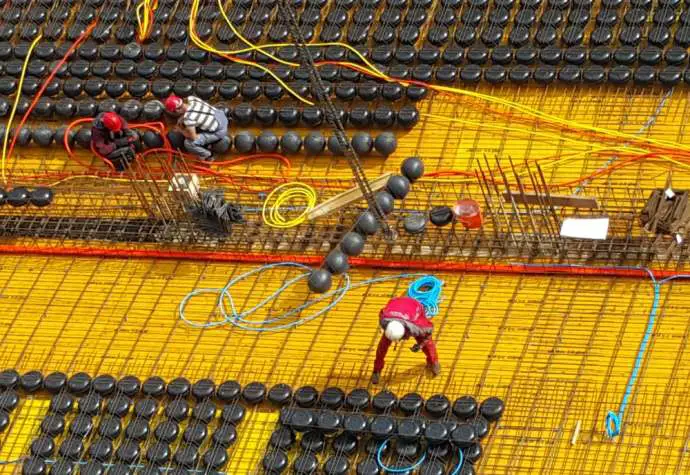STA, 15 August 2019 - Slovenia's construction industry is seeing growth for the third year now. Nevertheless, it has still not returned to the levels before the crisis, while some indicators suggest that the growth trend could be reversed in the near future, finds a report by the Statistics Office.
Construction is one of the sectors that was hit hardest by the crisis ten years ago. While most of other sectors, such as industry, commerce and services, have already exceeded pre-crisis turnover, construction still lags far behind.
"After a significant fall in both the turnover and the number of employees and enterprises after 2008, growth was detected again in all three indicators after 2013, especially in 2017 and 2018," reads the statisticians' report.
While the number of construction enterprises has already reached the pre-crisis figures, with 19,220 such enterprises in 2018, the turnover and the number of employees still fall considerably short.
At the expense of the small number of workers, labour productivity increased and amounted to EUR 24,925 in 2018, exceeding the pre-crisis levels.
Construction companies generated a turnover of almost EUR 6 billion in 2018, which is almost 30% less than in 2008 and 34% more than in 2013. Almost half of the turnover was generated by specialized construction activities, 30% through construction of buildings and 21% by civil engineering.
There were 67,600 people working in the sector last year, compared 89,900 people a decade ago. 70% of the workers were Slovenian citizens and 30% foreigners. Most of the foreign workers came from Bosnia and Herzegovina, followed by those from Kosovo, North Macedonia, and Croatia.
Among the 19,220 construction enterprises registered in 2018, micro-enterprises with up to 10 employees prevailed, representing more than 90%. Compared to 2008 there were more than a half fewer medium-sized and large enterprises, however, in this period the number of parent enterprises doubled, which means that smaller enterprises which are interconnected prevail.
Wages in the sector had been increasing until 2011, but fell somewhat between 2011 and 2015, and after 2015 increased again. Average gross monthly pay was EUR 1,290 last year, which is 12% less than in 2008 and 23% less than the national average, despite a 20% growth compared to 2017.
Data on the number of the building permits and the construction confidence indicator suggest an impending decline. The number of building permits issued declined over the past three years and the trend continues in 2019 - in the first half of this year 10% fewer building permits were issued compared to the same period in 2018.
Only the number of residential building permits is somewhat increasing, whereas the number of non-residential building permits issued is falling. Between 2016 and 2018 the surface area of buildings for which building permits were issued increased (8%), as did the number of the apartments in those buildings (by more than 19%).
In the first six months of this year the construction confidence indicator was below the average of the previous year. Expectations for contracts and jobs peaked at the beginning of 2018, but then began to fall. The only exception was the indicator assured work in hand which in the first six months of 2019 was constantly above the average of the previous year.
As limiting factors to doing business, construction companies report in particular the shortage of skilled workers, fierce competition and high labour costs.






